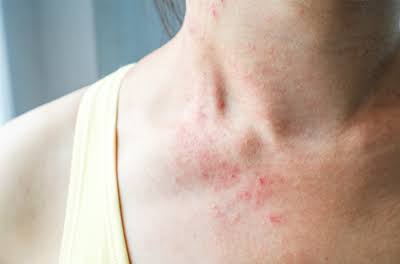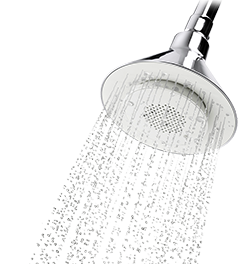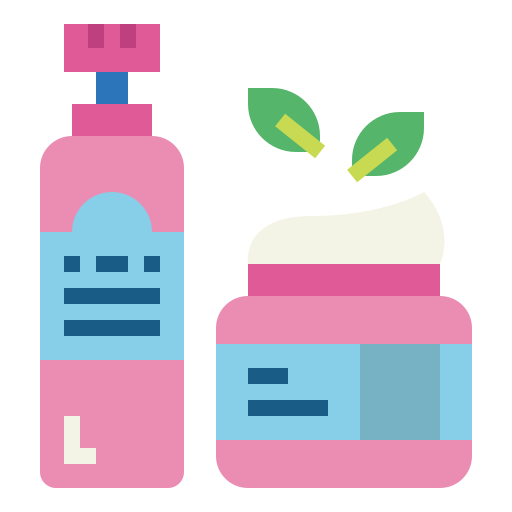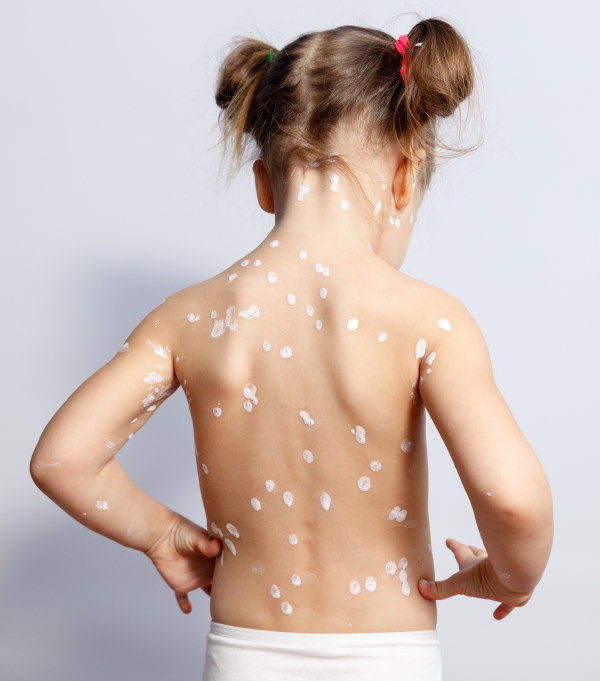

This is a common skin disease in children. It often appears as a red, itchy rash normally on the cheeks, arms and legs. Atopic dermatitis typically begins in childhood, usually in the first six months of a baby’s life. Even though it’s a common form of eczema, it can also be severe and long-lasting. When you or your child have atopic dermatitis, it may improve at times, but at others it may get worse. Often, atopic dermatitis disappears as a child grows older, though some children will have atopic dermatitis flares into adulthood.
No matter where it appears, AD is often very itchy. Infants may rub their skin against bedding or carpeting to relieve the itch. In children of all ages, the itch can be so intense that a child cannot sleep. Scratching can lead to a skin infection.
AD can exist with two other conditions - asthma and allergic rhinitis. People who have asthma and/or who have family members who do, are more likely to develop AD
Because atopic dermatitis can be long lasting, it is important to learn how to take care of the skin. Treatment and good skin care can alleviate much of the discomfort.
Atopic dermatitis is a chronic inflammatory skin condition and commonly occurs in children, with 90% of cases occurring before the age of 5. There are periods where the skin symptoms are worse (knownas flares) and periods where the skin symptoms get better (known as remission).
Atopic dermatitis is a commonly occurring condition and can have different levels of severity. AD occurs equally in women and men. While it is more common for atopic dermatitis to occur in infancy and childhood, about 5% of cases begin in adulthood. There is a higher prevalence of atopic dermatitis among individuals who reside in urban environments (cities).
Rash or patches of dry, scaly skin that occur in patterns based on the age of the individual, changes in skin colour, weepy sores, thickened skin, papules, blisters or vesicles, as well as symptoms that impact the ears and the eyes.
One of the key characteristics that defines AD is the intense itch.
The main causes of atopic dermatitis are a familial atopic predispositionand certain environmental factors. If one of the parents is atopic, the risk of the child being atopic is approximately 50%. The risk increases if both parents are atopicThe term "atopy" refers to the genetic tendency of developing allergic diseases, like asthma or seasonal allergies.
No, atopic dermatitis is absolutely not contagious. Children suffering from this disease must be allowed to play normally with their friends.
Yes, it is crucial that the child's teacher be informed because she will know how to explain what atopic dermatitis is in children's words, which will reassure the child and allow him or her to cope with his disease. She will know what measures to take.
AD is diagnosed clinically by your dermatologist.
The essential features for diagnosis of AD are presence of itching & inflamed skin that has typical age-specific patterns and a chronic or relapsing history.
Treatment goals for atopic dermatitis may include symptoms relief, reducing the inflammatory response, repairing and keeping a healthy skin barrier, controlling the intense itch and managing triggers.
Phototherapy can be a treatment option for some.
Avoid excess clothing on children.
(Perspiration causes itching).
Prefer cotton clothes, soft to the touch (avoid synthetic materials and wool, which are often itchy).
Use regular laundry detergent, but rinse well.
Avoid drying laundry outside during the pollination season.
Do not overheat or overcool the bedroom.
Keep the room aerated in all seasons.
Avoid potential allergens : dust, animal hair, mites.
Avoid rugs, and feather pillows and duvets.
Many children dream of having a pet. In any event, animals with fur or hair (dogs, cats and rabbits) should not sleep in the child's bed or on the sofa. The house must be vacuumed at least three times per week. (Ask your doctor before purchasing a pet.)
Although atopic dermatitis improves during the summer, certain protective measures should be adopted: shade, clothing, hat, very high protection SPF creamat recommendation from the child's dermatologist.
No problem (unless presence of weeping lesions that will sting).
Rinse afterwards, as the salt on the skin causes sensitivity.
Cut nails short to avoid excoriation when scratching.
Yes, all children can play sports.
However, sweat causes scratching. Regardless of the activity, the child should systematically rinse off, dry without rubbing and apply a moisturizing cream to the entire body.
He or she can swim, but chlorine and salt may irritate his or her skin. After swimming, the child should rinse off, dry without rubbing and apply a moisturizing cream to the entire body.
Have them done normally.
Yes, certain foods can trigger flare-ups in sensitive children. The main foods are: cow's milk, eggs, peanuts, wheat flour, and fish. When in doubt, ask your skin doctor.
Avoid steroids as much as possible- both creams and syrups in a haste to achieve quick recovery. This will harm in the long run.
 Optimum water temperature.
Optimum water temperature.
Short shower everyday.
Use soap-free products (dermatological gel or bar) as the pH is closest to that of the skin and does not aggravate skin dryness.
Wash hair with dermatological shampoos.
 Daily moisturization of the skin with an emollient is crucial.
Daily moisturization of the skin with an emollient is crucial.
It softens and hydrates the skin.
It protects the skin as skin barrier function is restored.
Itching and irritation sensations are reduced.
